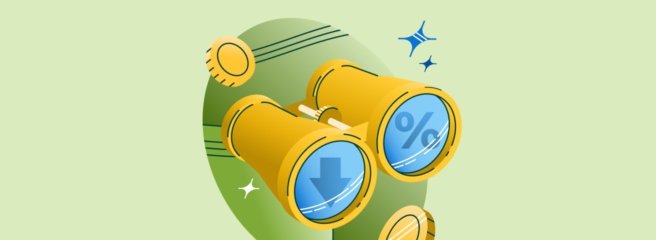
Fresh fallen snow can be a pretty sight to see. Like snow, it’s easy to pile up debt. What’s not so easy is staying motivated to shovel away at paying debt off. There are many strategies and plenty of advice about debt relief and consolidating debt, but the debt snowball effect in particular has picked up speed for being an accelerated repayment method that’s easy to implement.
Let’s take a closer look at the debt snowball method and if it’s the best payoff plan for you.
Debt snowball defined
The debt snowball method is when you pay off your smallest debt first and your largest debt last. You start by listing all your debts in ascending order by balance. This list includes credit cards, personal loans, student loans, medical bills, auto loans, and excludes mortgage payments. With this method, you can focus on paying extra on the lowest debt (your first debt listed) and paying the minimum on the remaining debts.
The snowball effect comes from rolling from paying off one debt to working on the next, gaining momentum and feeling accomplished for paying off–and crossing off–debts on your list. The minimum payment you made on the erased debt gets added to the payment on the next debt on your list. Your payment begins to “snowball” and increases into larger payments each time you pay one debt off.
How to build your snowball debt plan in 4 steps
The debt snowball method is broken into four simple steps.
Step 1: Organize and list all your debts in order from smallest balance to largest balance, regardless of interest rates. Consider all credit cards, personal loans, student loans, medical bills, and auto loans. Don’t include your mortgage loan.
Step 2: Determine how much extra you can afford to pay on the smallest debt and make minimum monthly payments on the other debts.
Step 3: Stick to a budget and see where you can find extra money in there. The best practices include cutting unnecessary spending, picking up a new side hustle, hosting a garage sale—whatever bandwidth you have to earn a little extra cash in your pocket.
Step 4: Once the smallest debt is paid off, take on the next debt on your list. Repeat until you have completed your list and paid off your debts.
Debt snowball example
Now, let’s break down the snowball effect in a real life example. Here’s a hypothetical list of debt balances and payments:
- $500 in medical bills (no interest), minimum monthly payment of $10
- $4,000 in credit card debt (24.9% APR), minimum monthly payment of $45
- $6,000 in auto loan debt (3.96% interest), minimum monthly payment of $50
- $30,000 in student loan debt (5.9% interest), minimum monthly payment of $150
Remember, the snowball method can only focus on paying the balance, regardless of interest on debt. So you’ll start paying off the medical bill first, since it’s the lowest balance. Each month, you’ll pay the minimum $10 plus any additional amount you can afford.
Once the medical bill is paid off, you then roll the medical bills $10 minimum into the credit card debt payment, paying $55 a month plus any additional amount you can afford. The minimum payments continue to snowball and build into bigger payments as you pay off debts. Keep the snowball going until you pay off all your debt.
As you work to pay off credit card debt, it’s important to stop using your credit cards. Otherwise, the method may not be as effective.
Does the debt snowball actually work?
The debt snowball method works, but not without a little patience and determination. How long the debt snowball takes can vary depending on your amount of debt and how motivated you are at changing your habits.
Snowball effect pros
- Motivation: When you pay off even the smallest amount, you build confidence to stay focused on tackling debt. The potential psychological benefits of financial momentum outweigh the math.
- Easy to implement: Since you only focus on the balance of your debts, there’s no hassle of calculating interest rates or APR on each debt or worrying about taking out another loan.
Snowball effect cons
- Interest: Depending on the amount of debt, you are likely to pay more in interest over time since you are prioritizing balances over comparing interest rates and APRs.
- Time: As interest accrues, it can push back reaching the finish lines to paying off those higher debts.
Debt snowball method vs. debt avalanche method
Unlike the debt snowball method that focuses on overall balance, the debt avalanche method focuses on interest rates.
This time, your list starts with the debt with the highest interest rate and places debt with the lowest interest rate last. You can use the avalanche method for credit cards, personal loans, student loans, medical bills, and auto debts. This method ideally saves you more in the long run, because you pay less in interest. The debt avalanche method is most effective with a disciplined approach and a consistent amount of discretionary income.
Both strategies are useful, and sometimes you can even combine the two methods depending on your financial standing. It’s important to use a debt payoff strategy you know you can stick with.
Bottom line: Will the debt snowball work for you?
By rolling from one debt to the next, this accelerated debt repayment plan allows you to gain speed in paying down debt. Best of all, you’ll feel good about accomplishing all those small wins, and you’ll be motivated to tackle the biggest snowball—your highest debt.
The best option for you is the method you know you can stick to. Check out what options are available through Upstart, and get started on your journey to financial freedom.







 Won't affect your credit score¹
Won't affect your credit score¹